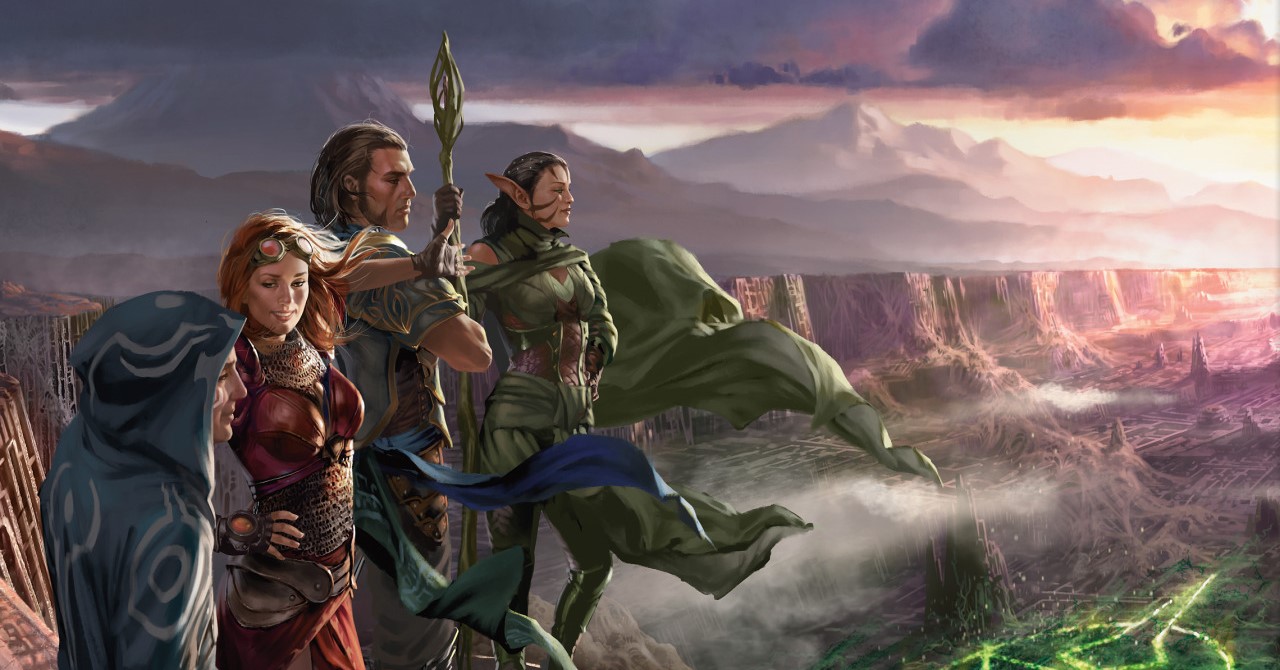Table of Contents Show
“Magic: the Gathering.” Its name is written in ancient tomes and spoken in hushed tones around dimly-lit tavern tables. Its very mention evokes labyrinthine complexity, an inconceivably vast arcane lexicon, and power beyond your wildest dreams. It’s one of the biggest names in hardcore high-fantasy nerdom, right up there with “Dungeons & Dragons” and Lord of the Rings. Whether or not you’ve ever sat down and shuffled up yourself, you’ve probably heard of “Magic: the Gathering.” “Magic: the Gathering” is a trading card game. Unlike most card games, which are played with a single standardized deck, “Magic” is played with decks that players create themselves using a wide variety of cards from randomized packs.
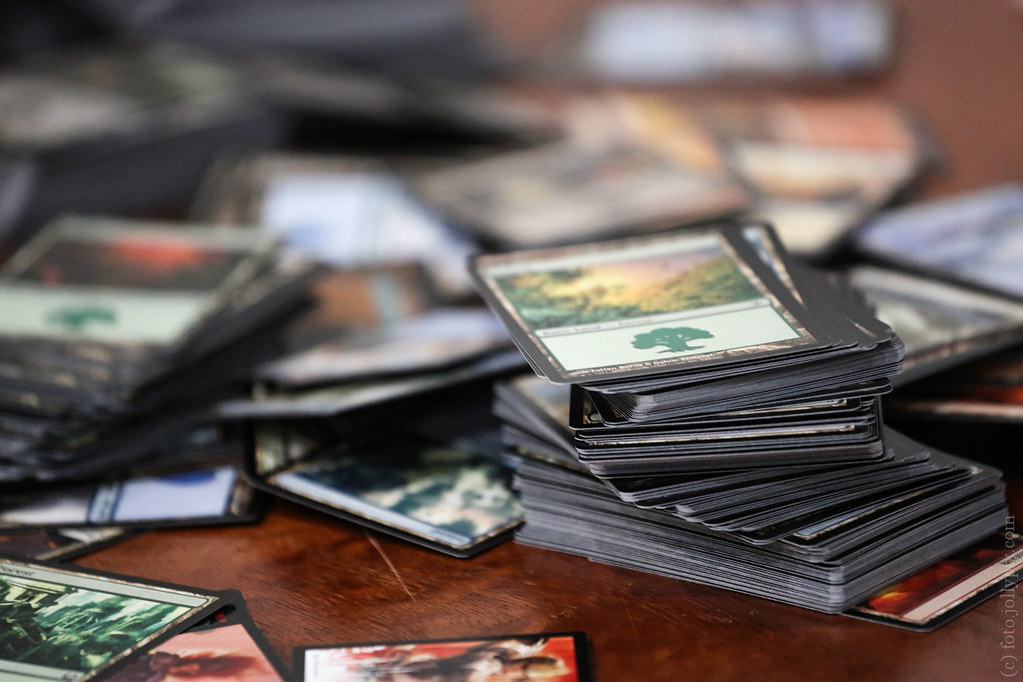
“Magic,” which was designed by mathematics professor Richard Garfield in the 1990s, was the first game to take full advantage of this model and spawned many famous imitators such as Yu-Gi-Oh!, the Pokémon Trading Card Game, and Hearthstone.
Trading card games are a very deep and rewarding hobby, and there are plenty of reasons to choose “Magic: the Gathering” over its imitators. For one thing, “Magic” has been releasing new cards for nearly thirty years, and new expansion sets are released four times each year to keep the game fresh. To date, there are over 20,000 unique “Magic: the Gathering” cards, making it one of the deepest and most strategically rich trading card games out there. But don’t let that complexity intimidate you: in 2021, the game is more vibrant, popular, and accessible than ever, so there’s never been a better time to learn more and step into the world of “Magic: the Gathering.”
You Are The Planeswalker
The basic concepts behind the game of “Magic: the Gathering” are a remarkably intuitive blend of storytelling and game design. The game is built around a high-fantasy theme, which means that it takes place in a universe entirely discrete from our own. Unlike most high fantasy stories, however, “Magic: the Gathering” doesn’t limit itself to just one universe. Instead, each of the various monsters, incantations, and landscapes depicted on the cards hail from one of many planes of existence in a potentially infinite multiverse.
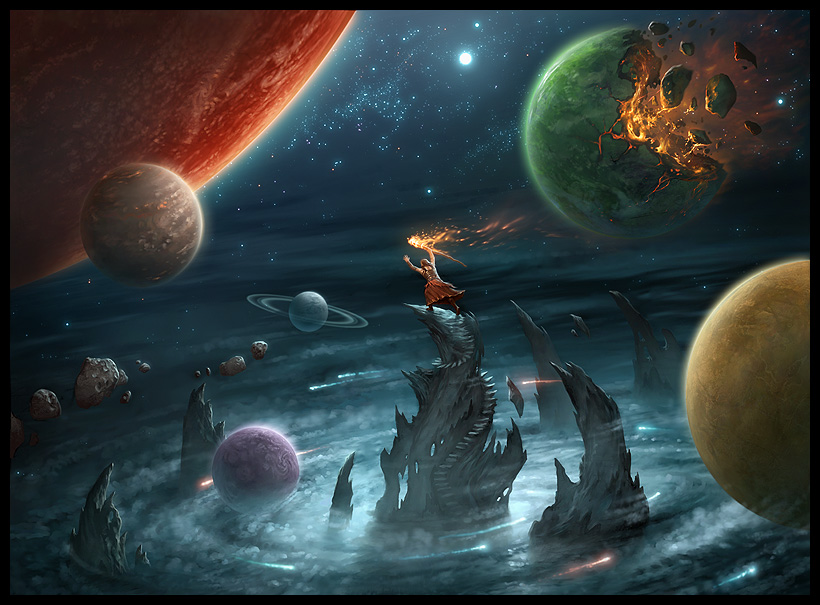
In the multiverse, there exist extremely powerful wizards known as planeswalkers who can magically transport themselves from plane to plane. In a game of “Magic: the Gathering,” you and your opponent take on the role of planeswalkers locked in arcane combat, drawing on an immense library of powerful spells to aid you.
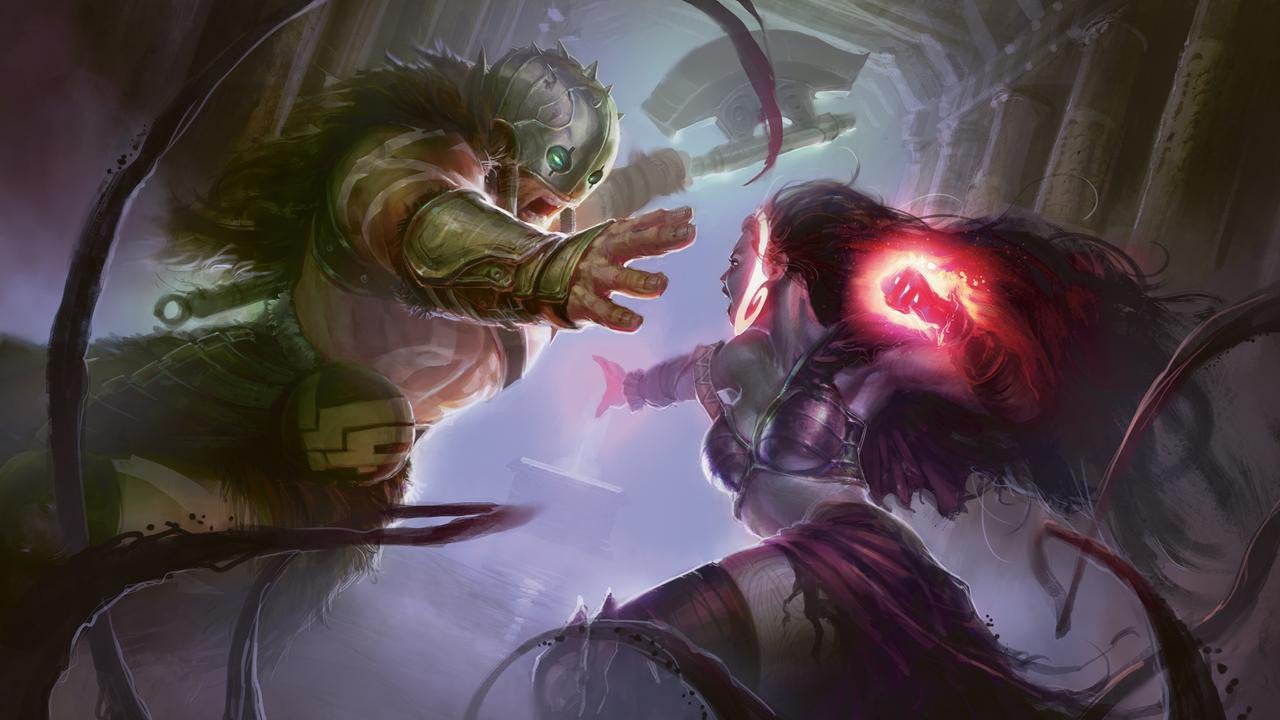
The player’s special role as a powerful, dimension-hopping planeswalker explains why they can leverage command over the extremely powerful creatures depicted on many cards, as well as why they can draw on magic from many different “Magic: the Gathering” planes. But what happens when two planeswalkers meet and fight? To find out, you need to get into the game!
A Crash Course In Magic
Every game of “Magic: the Gathering” starts with a couple of decks, or “libraries” as they’re known in the official rules. Each player supplies their own deck, usually consisting of sixty cards that might be thoughtfully assembled for optimal competitive play or just thrown together from a player’s collection. In any case, as the game begins both players shuffle their decks, decide who will take the first turn, and draw seven cards.
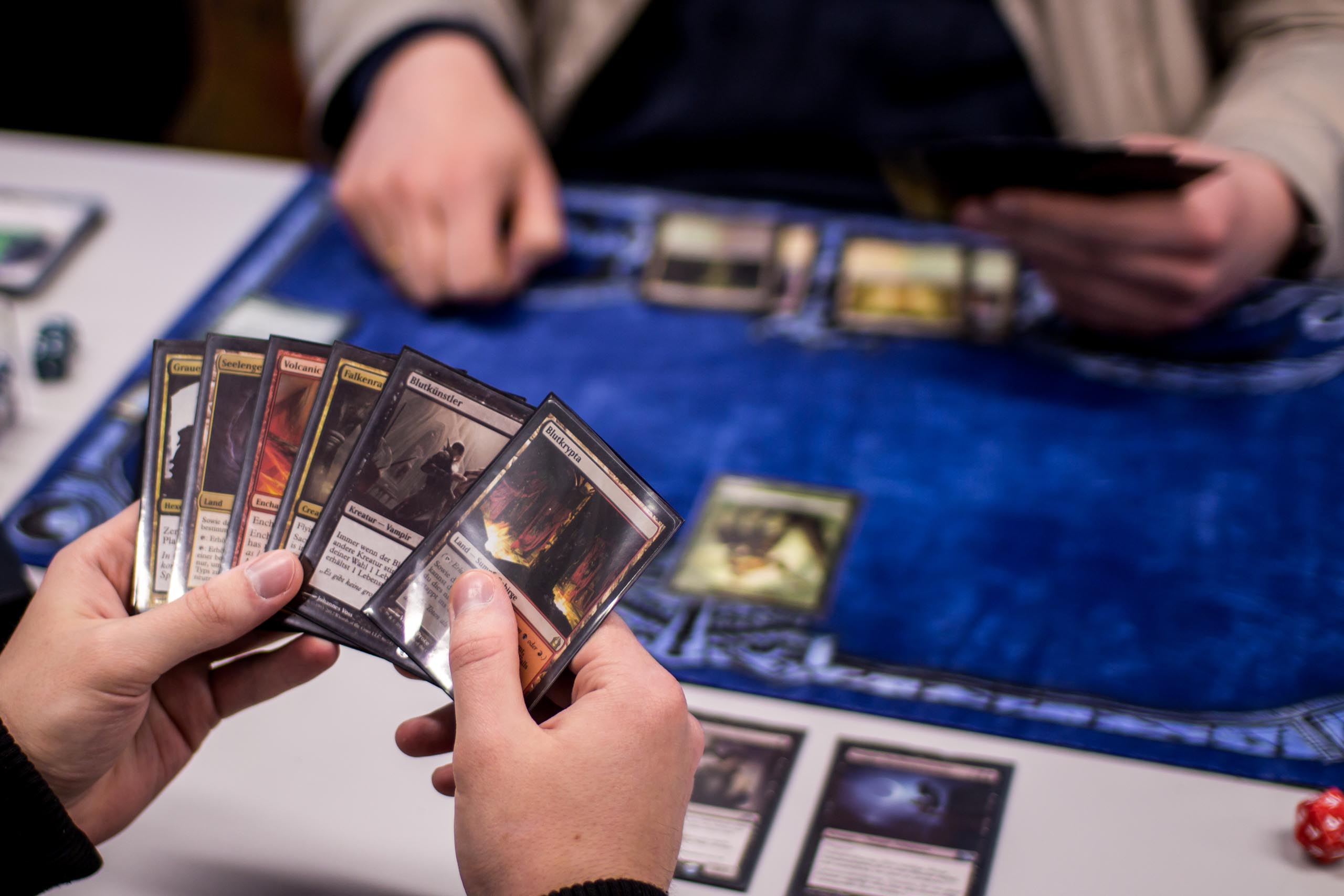
Any given hand will almost certainly contain a wild variety of different cards, but the first type of card to understand is land cards. Players of strategy games will be well-acquainted with the idea of resource management, and land cards are how you get “Magic’s” main resource, mana, which is required to play every other type of card. You can play one land per turn and then“tap” it, or turn it sideways, to get one mana. Don’t worry, though: all of your lands will untap at the beginning of your next turn, whereupon you can draw mana from them again.
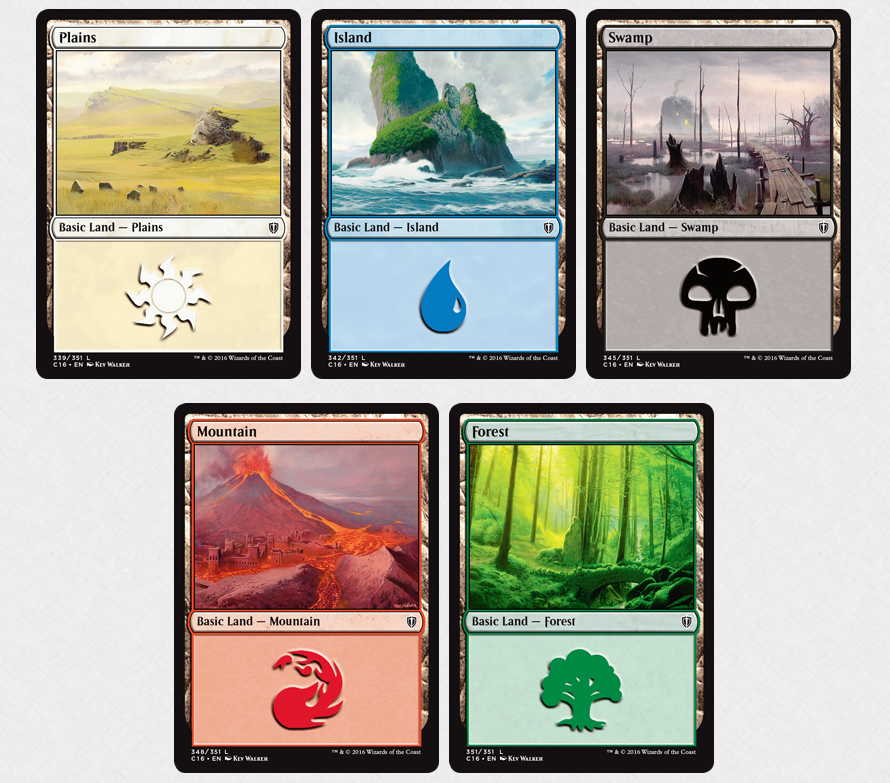
Every card in your deck that isn’t a land is a “spell,” and each spell has a particular mana cost listed on the top right of the card. The more mana is required to cast a spell, the more powerful it has the potential to be. Meanwhile, because you can play a land card each turn, you’ll have access to more and more mana as the game goes on. You’ll start by playing small stuff and then build up to your ultra-powerful climactic plays.
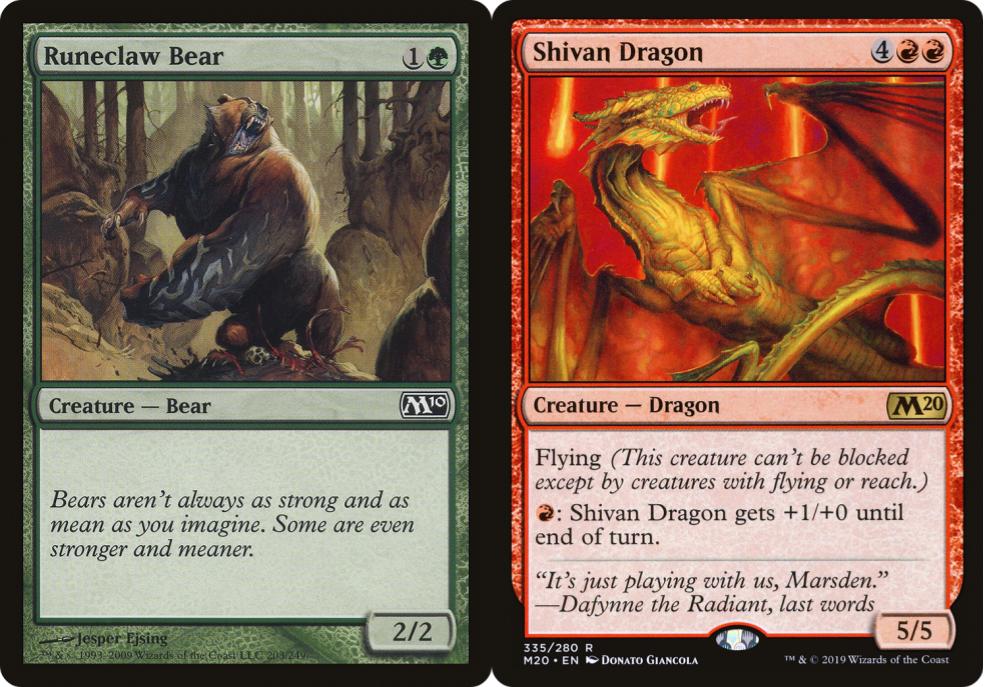
One thing that immediately stands out about “Magic: the Gathering” cards is the bright coloring of their frames and text boxes. That isn’t just for show: both lands and spells come in five distinct colors that correspond to different types of magic.
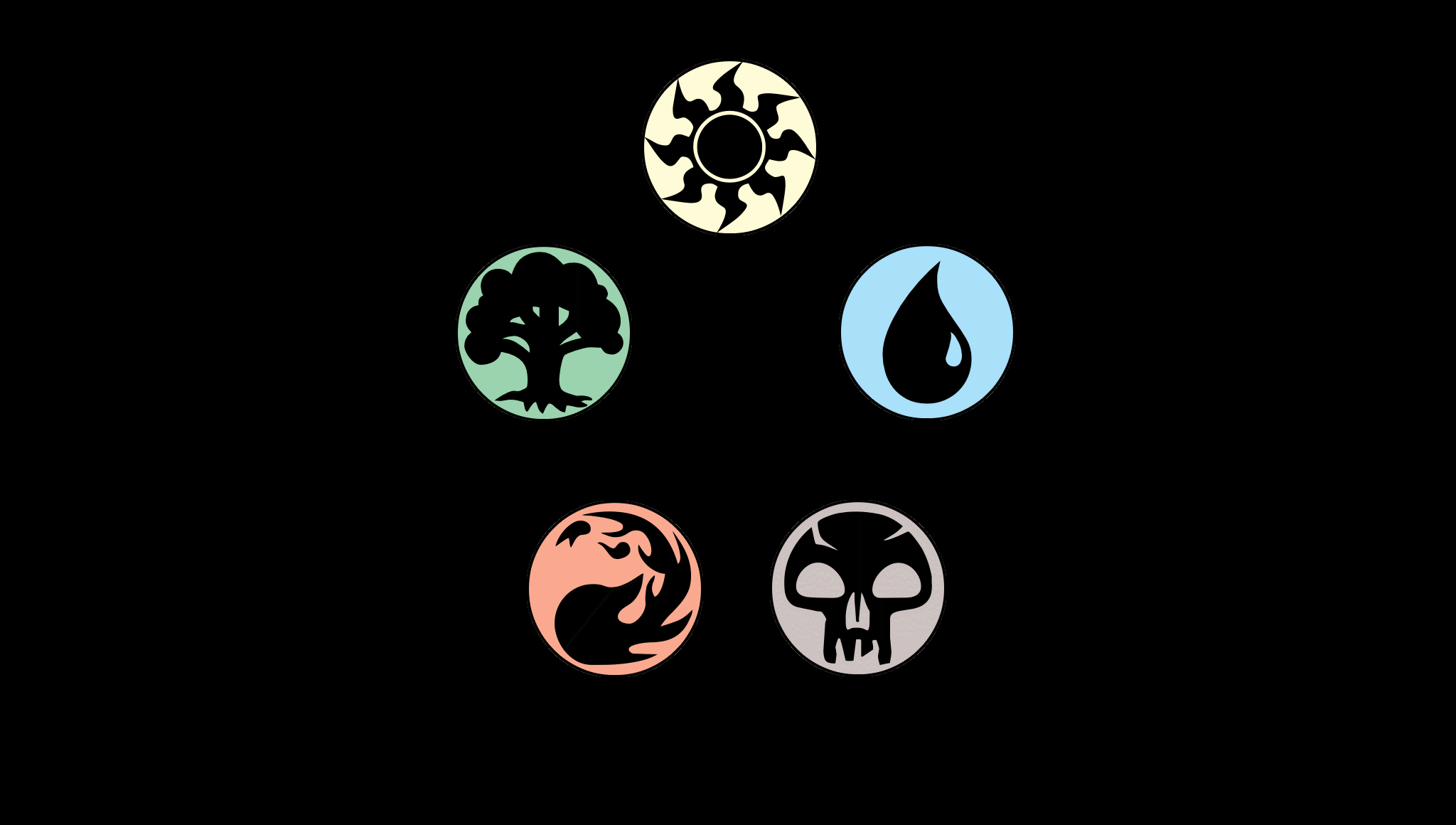
White magic is about order and collective strength. Blue magic is about intelligence and manipulation. Black magic is about decay and sacrifice. Red magic is about chaos and ferocity. And finally, green magic is about growth and evolution. Most “Magic: the Gathering” decks are built around leveraging the strengths of one of these colors or combining the approaches of multiple colors. The varied philosophies expressed by each color are a big reason why deckbuilding becomes a form of personal expression for many players, and why most players have favorite colors or color combinations.
Spells in “Magic: the Gathering” take a variety of forms. “Sorcery” and “instant” cards have a flashy effect that dissipates as quickly as it occurs. “Enchantment” cards weave more permanent magics into the battlefield, producing a lasting influence on the game. “Artifact” cards represent ancient relics that can be activated to achieve wondrous effects. “Planeswalker” cards allow you to ask your fellow world-hopping planeswalkers for help and leverage their unique magical abilities. And, finally, casting a “creature” spell involves summoning a fierce animal, mythical monster, or cunning ally to fight on your behalf. Once summoned, creatures can attack your opponents directly, which is the most common way to bring your opponent’s life total from 20 to 0 and win the game.
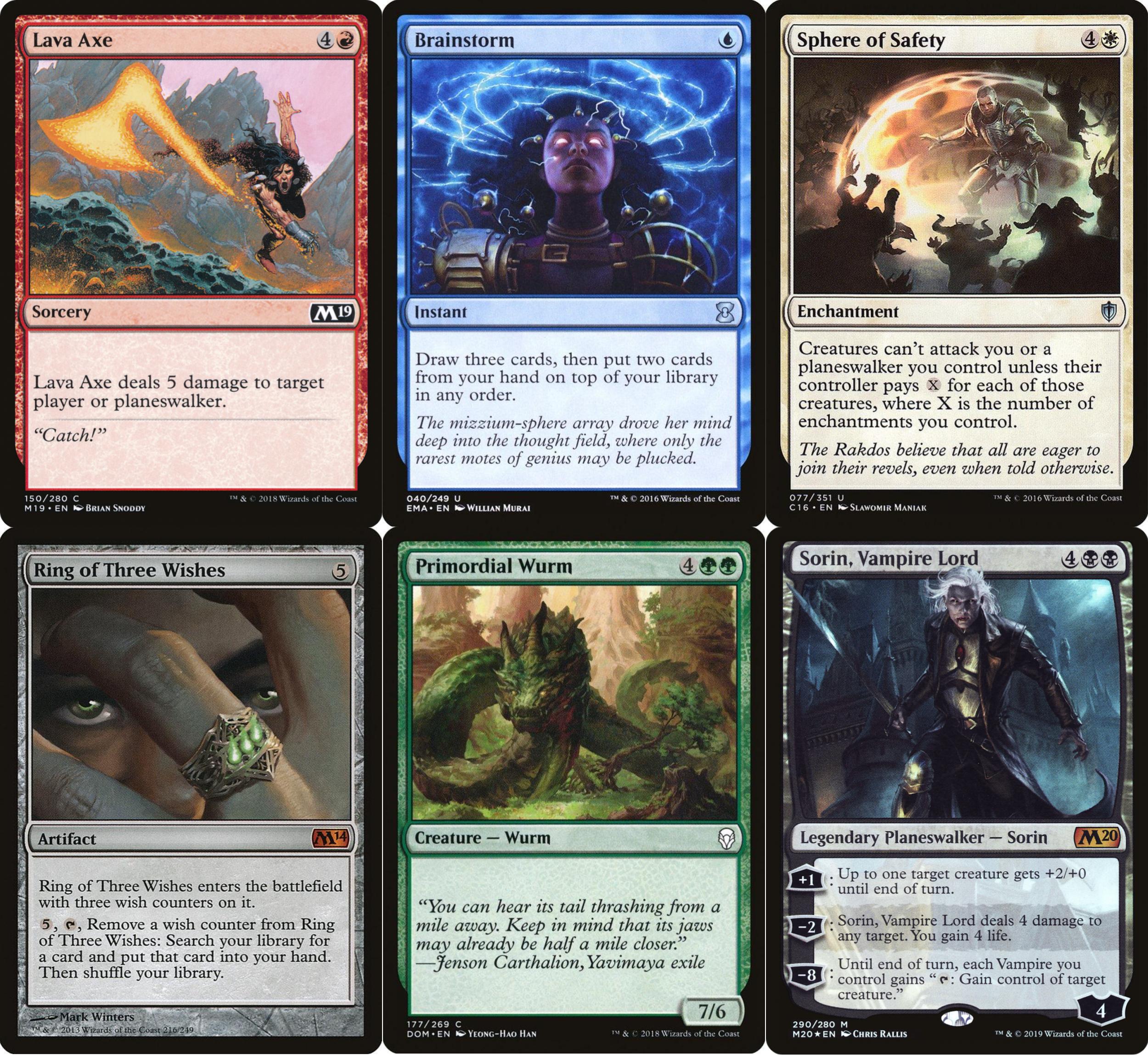
Even just the basics of “Magic” gameplay are complicated, and this explanation barely scratches the surface of what a typical game is like. More detailed instructional videos are available on YouTube, and they’re worth checking out whether you like your explanations deliberate and simple or fast-paced and joke-filled. However, one of the best ways to learn might just be to jump right in. Nowadays, that’s not as hard as it might sound.
How To Start Playing Today
For new “Magic: the Gathering” players in the modern era, the absolute best way to get started is “Magic: the Gathering Arena“, a free-to-play program for playing “Magic: the Gathering” virtually. It allows you to try out the game without investing any money and to do so from the comfort of your own home, which is especially important due to the ongoing pandemic. The best thing about “Magic: the Gathering Arena,” however, is that it begins with a comprehensive, hands-on tutorial that will have you slinging spells like a pro in no time.
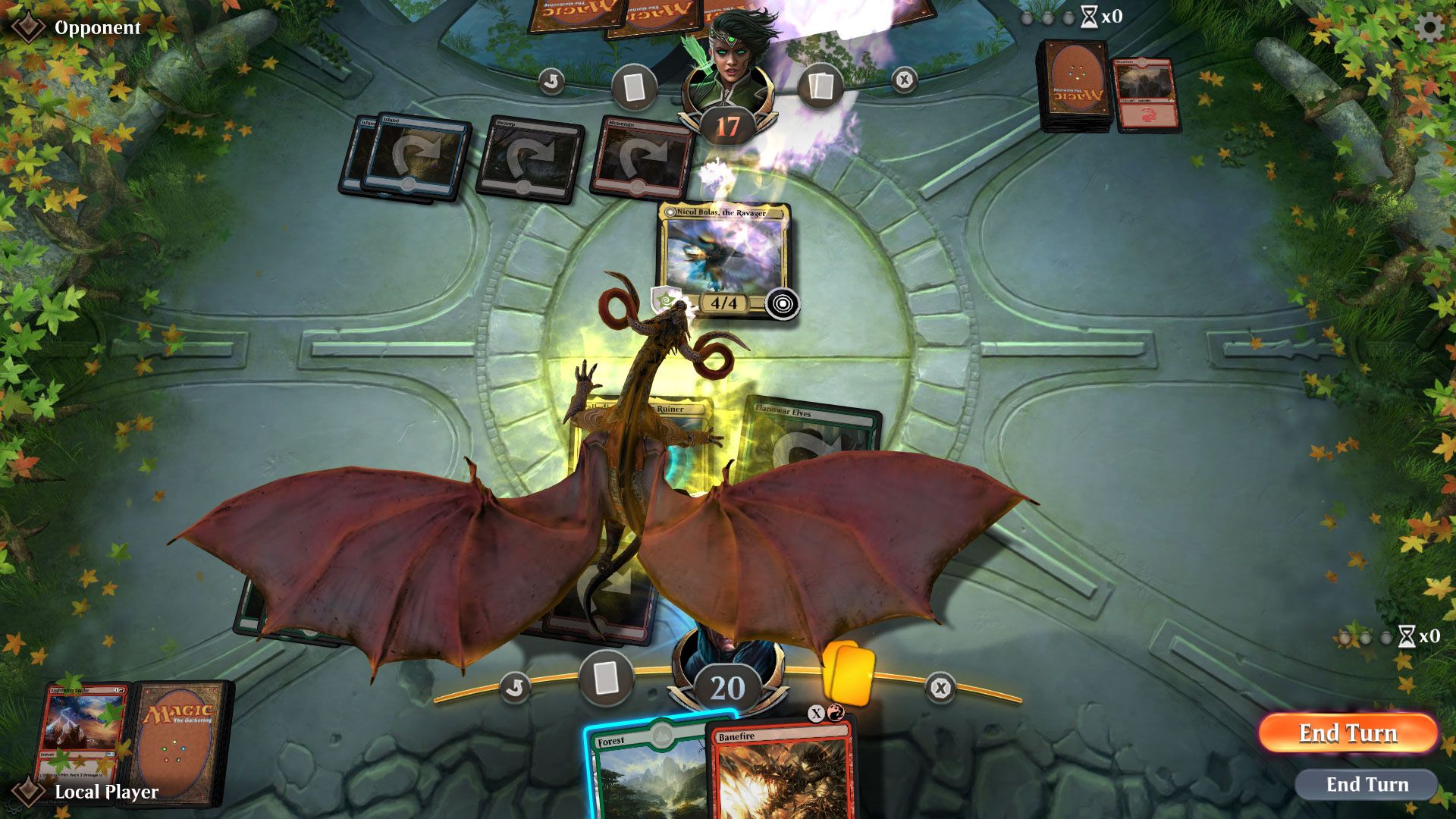
Beyond the tutorial, “Magic: the Gathering Arena” has a lot to offer players who are ready to invest some more money or time. “Arena” is the preferred method of playing Standard, which is “Magic’s” most popular competitive format. In Standard games, players can build decks using only cards from expansion sets that have been released in the past two years. This constant rotation means that gameplay is always fresh. However, if you want to play with cards that are a bit older, “Magic Arena” also has the Historic format, which generally allows cards released from 2017 onward.
Another fantastic way to play “Arena” is Limited, where you’re given a limited pool of cards and must build a forty card deck to play against other players who have been similarly restricted. Sealed is a Limited format where you have a pool of six booster packs to build your deck. But in the ever-popular Draft Limited format, you pick one card from a fifteen card pack and then move on to another pack, repeating the process and developing your deck one card at a time.
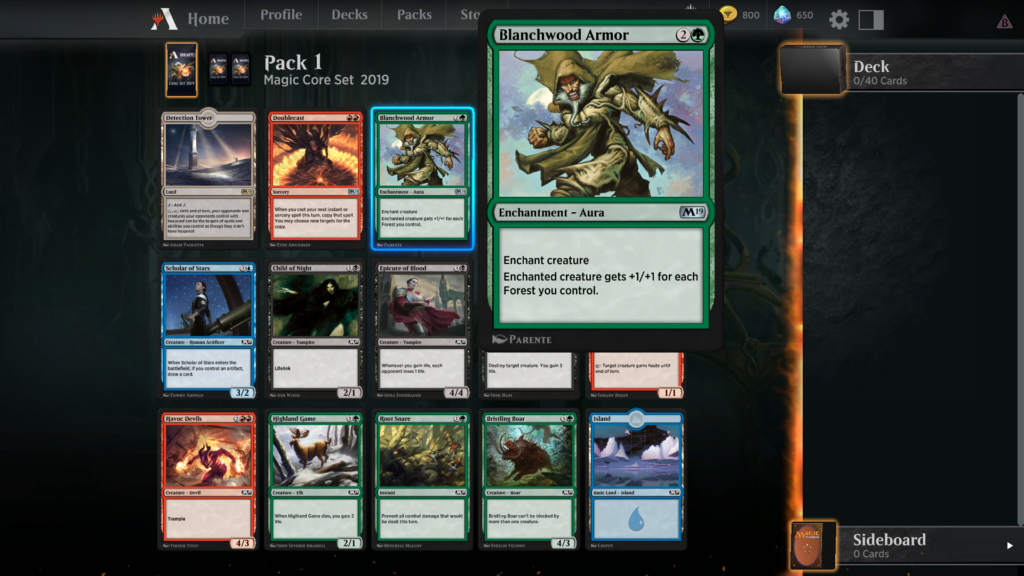
A Meeting Of The Mages
No matter how great “Magic: the Gathering Arena” is, the game is still best played in-person with physical cards. The best place to do that is at specialty game stores. These local businesses sell “Magic” cards and offer a space to play in sanctioned tournaments or informally with fellow players. A good game store is an excellent place to spend an afternoon and meet some new friends.
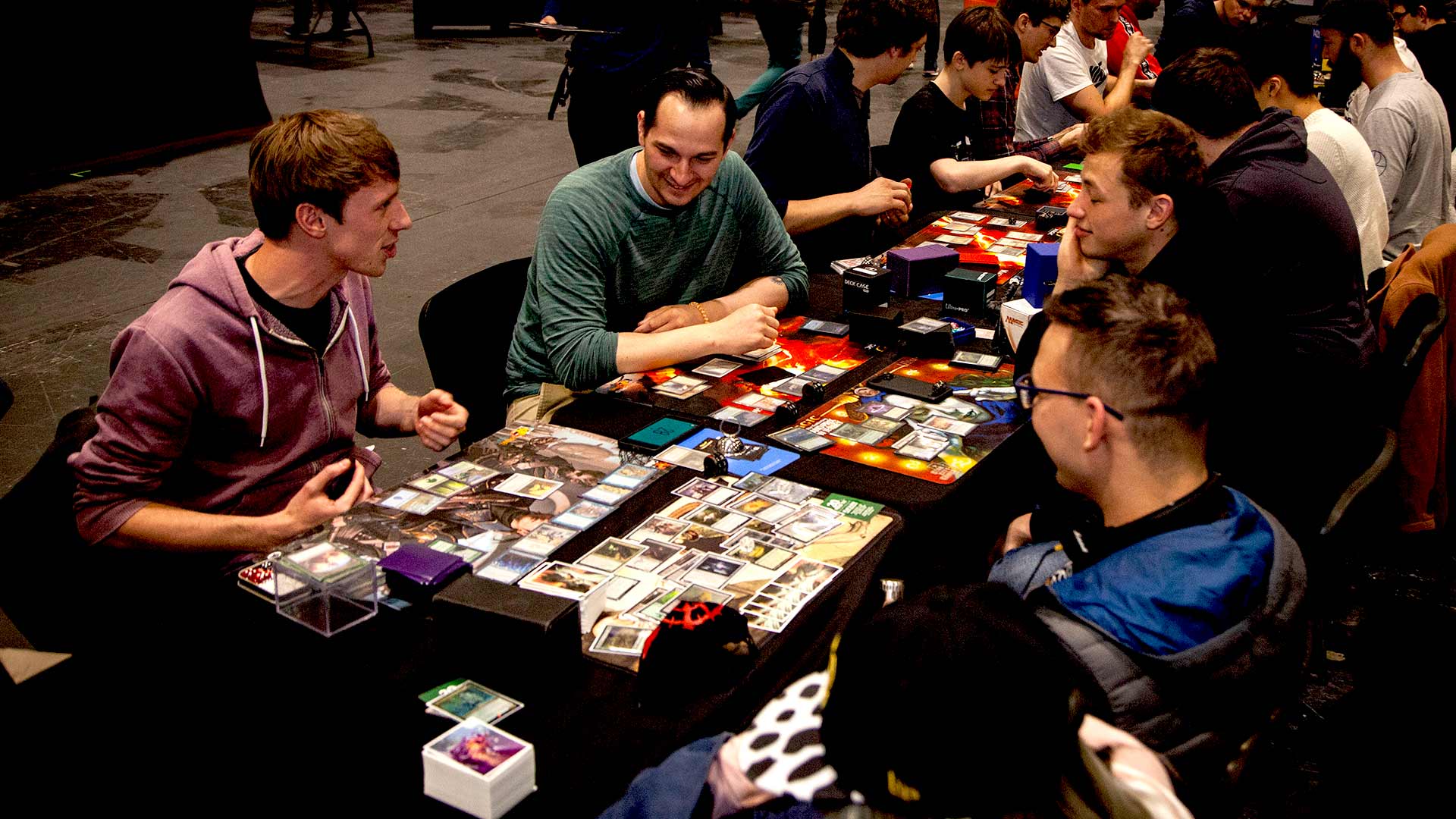
At the time of this article’s publication, many local game stores have suspended in-person play due to the ongoing pandemic. However, when in-person events become safe again, “Magic: the Gathering” will continue to be what it’s always been: an incredibly fun way to spend time with friends and meet new people. If you start learning about “Magic” now, it could be a new in-person hobby for when the world opens up again.
All of your favorite “Arena” formats, such as Standard, Sealed, and Draft, are also playable in-person. Further, there are other formats that can only be played in-person, offering even more possibilities. Do you enjoy Standard but want to play with older cards? Try Pioneer, which allows you to play with cards as old as 2012, or Modern, which goes all the way back to 2003. Enjoy Limited and want more ways to play? Special expansion sets like Conspiracy and Battlebond put a twist on Drafting, and many game stores still run events around them.
Finally, there’s the Commander format. In Commander, you build a deck out of 100 unique cards around a legendary creature, to which you always have access. Commander is typically played with four people, which leads to dynamic alliances and deal-making as each player jockeys to be the king of the hill.
“Magic: the Gathering” offers effectively limitless possibilities for every type of player, whether online or physical, competitive or casual, young or old. No matter how you play, it’s good to be a planeswalker. And one of the best parts is the sheer variety of planes you’ll be able to visit.
These Planes Were Made For Walking
The multiverse conceit at the core of “Magic’s” story is a huge part of how the game remains fresh over years of new releases. Each of the many planes that have been explored so far have completely different styles, moods, species, characters, and conflicts, such that every player will find at least one setting that fits their tastes perfectly.
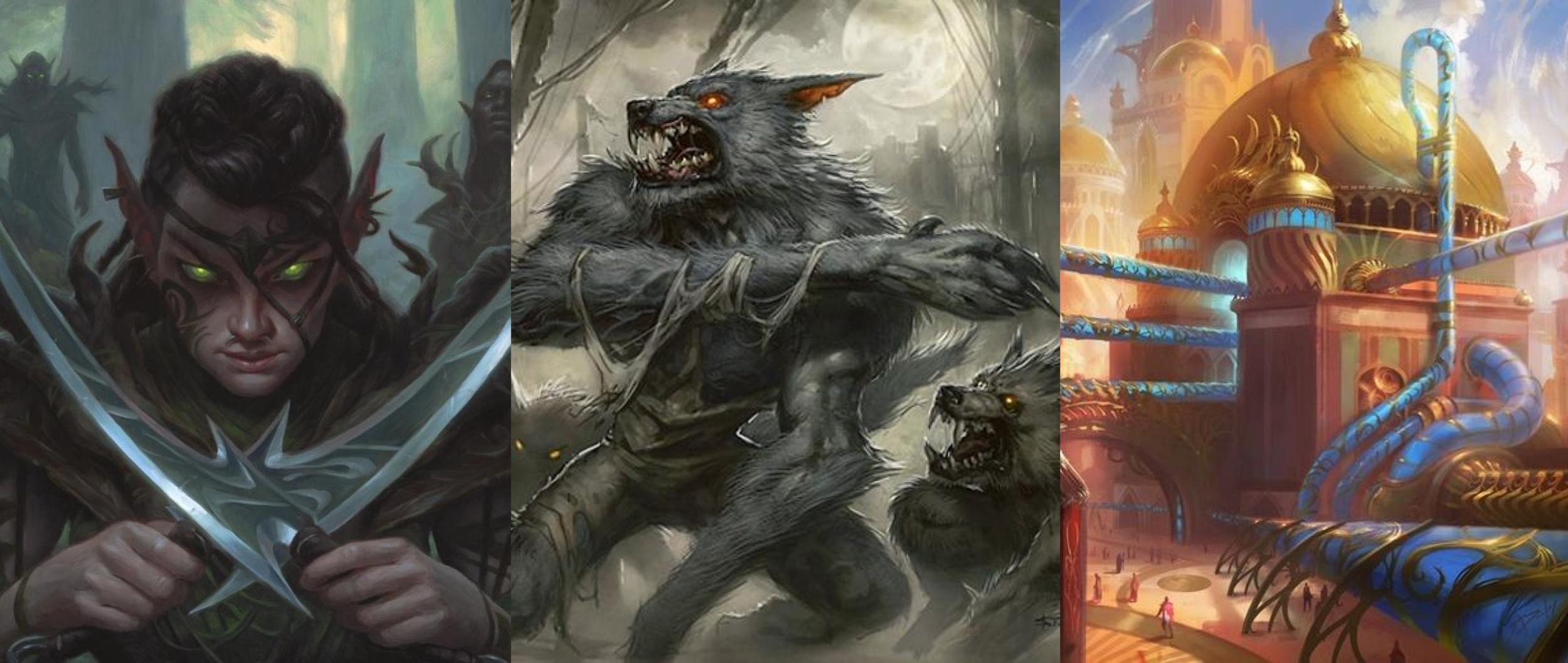
Do you like traditional, Tolkienesque fantasy? Take a trip to Dominaria, with its elves, knights, and wizards. Is horror more your flavor? Visit Innistrad, where vampires lurk in ruined keeps and werewolves stalk the moonlit woods. What about steampunk? On Kaladesh, ingenious artificers build fantastical clockwork contraptions and compete in grand competitions. Or maybe you’re into Greek, Egyptian, or Norse mythology. Theros, Amonkhet, and Kaldheim have you covered.
Astounding Tales
Most individual “Magic: the Gathering” expansions focus on a single plane and are built around a linear story. These narratives are communicated both on the cards and through serialized stories published on the “Magic” website, or sometimes even full-length novels. There have also been stories that continue from set to set. Many of “Magic’s” early sets were dedicated to chronicling the life and deeds of Urza, a legendary planeswalker and artificer who defended the plane of Dominaria from the otherworldly Phyrexians. More recently, “Magic” players followed the exploits of the Gatewatch, an Avengers-esqe alliance of benevolent planeswalkers trying to thwart the nefarious elder dragon Nicol Bolas.
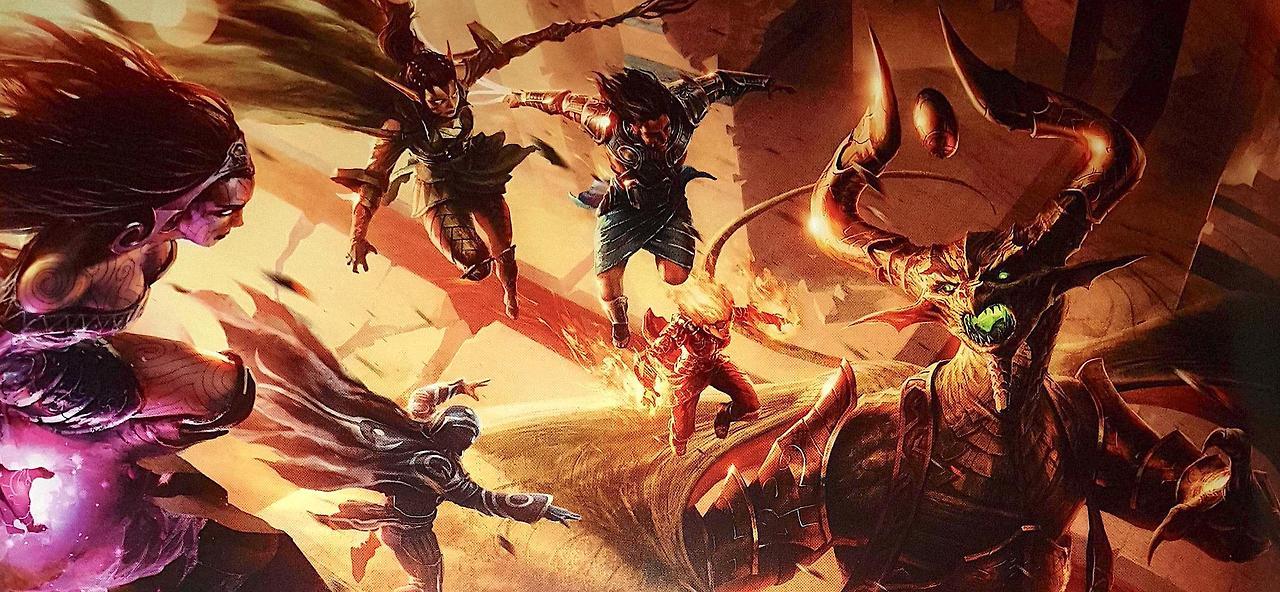
But the greatest strength of “Magic: the Gathering’s” narrative is its potential for non-linear storytelling. Most of the cards in any given set aren’t directly relevant to the main story, and are dedicated instead to exploring every nook and cranny of the plane on which the set takes place. This works especially well with settings where a large-scale conflict is brewing in the background. For example, the jungle-covered plane of Ixalan was the setting of a four-way war between a Mesoamerican-inspired empire that trained dinosaurs as steeds, a clan of conquistador vampires, a society of river-dwelling merfolk, and a fleet of swashbuckling pirates.
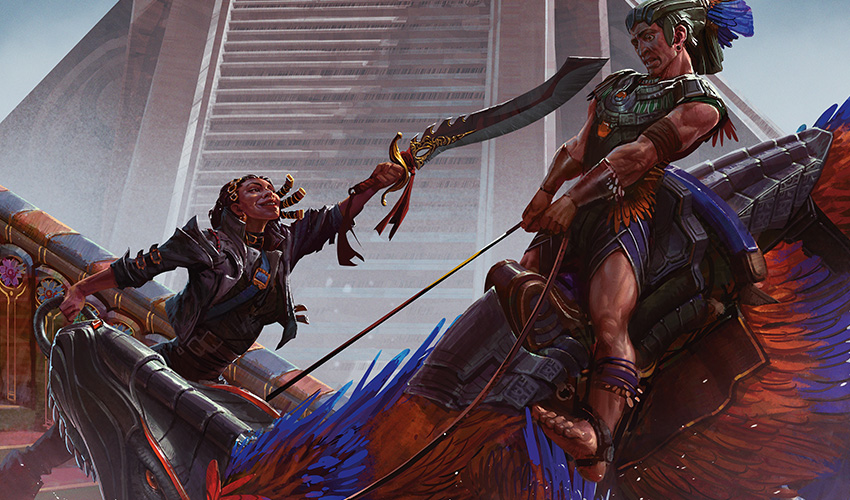
Each individual card depicted just one small interaction between these groups, but taken together the set assembled a picture of a larger conflict that couldn’t be relayed in a linear fashion. It’s hard to imagine that trading cards could be the perfect medium in which to tell a particular story, but “Magic: the Gathering” demonstrates the effectiveness of this unlikely narrative methodology.
Crossing The Stories
But as if “Magic: the Gathering’s” brilliant original storytelling wasn’t enough, recent announcements have opened up new possibilities in the form of crossovers. This July, “Magic” will be heading to Faerûn in its first ever crossover with the world of “Dungeons & Dragons.” What’s more, a special series of Magic cards called “Universes Beyond” will soon see “Magic: the Gathering” cross over with The Lord of the Rings and Warhammer 40,000.
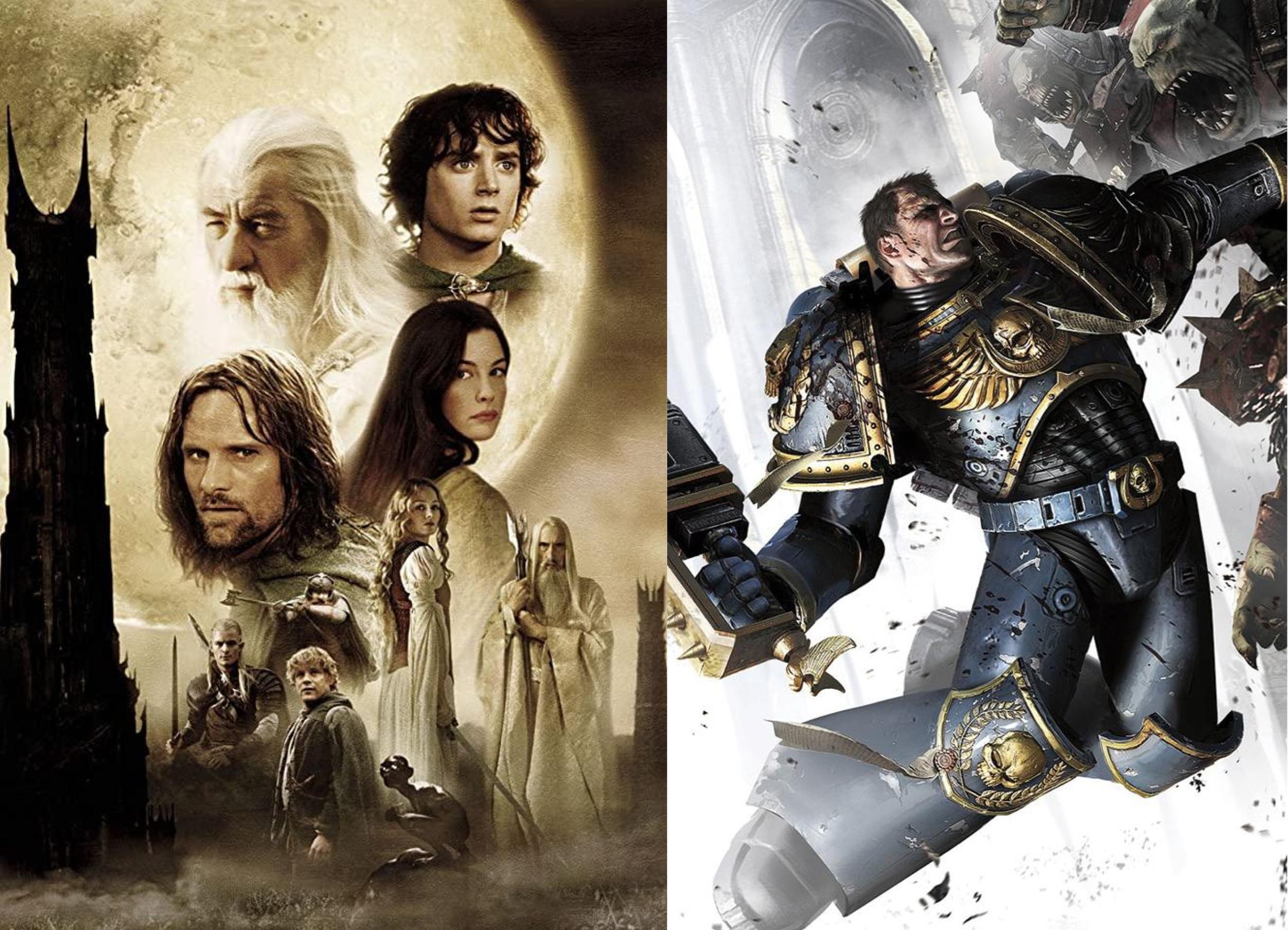
“Warhammer 40,000: Space Marine.” Relic Entertainment. 2011.
For multi-franchise fans, there’s a lot to get excited about. Meanwhile, fans of these franchises who aren’t yet familiar with “Magic” can look forward to a brand new way to experience their favorite characters and worlds.
A Game Like No Other
There are so many reasons to get into “Magic: the Gathering.” Its rich history, deeply strategic gameplay, and incredible story are all huge draws, as is participating in the huge and inviting community surrounding the game. But the best thing that can be said for “Magic: the Gathering” is that it’s loads of fun, and a humble article can’t prove that on its own. So if you want to experience the game for yourself, download “Magic: the Gathering Arena” and give it a shot. See you out in the multiverse, planeswalker.
